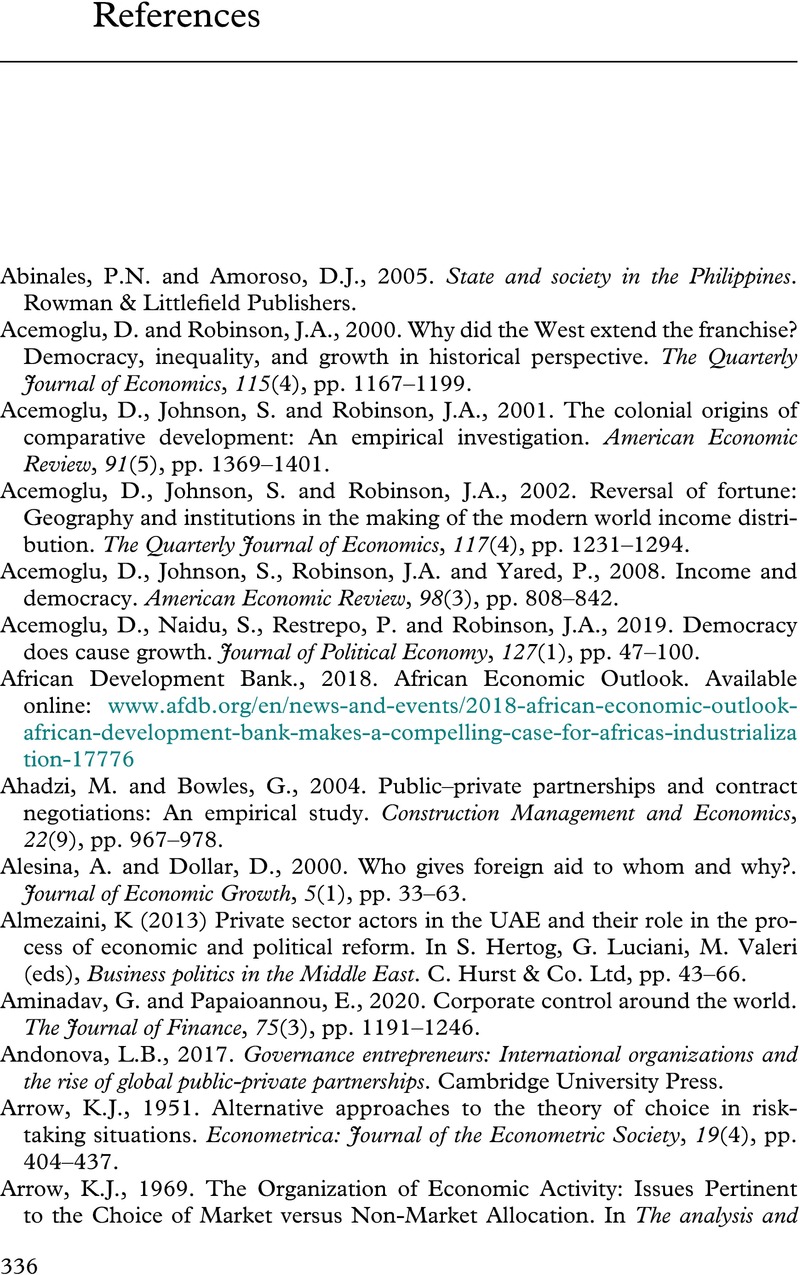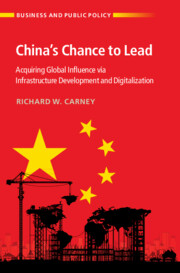Book contents
- China’s Chance to Lead
- Business and Public Policy
- China’s Chance to Lead
- Copyright page
- Dedication
- Contents
- Figures
- Tables
- Preface and Acknowledgements
- Abbreviations
- 1 Introduction
- 2 Market Failures and China’s Chance to Lead
- 3 Measuring Infrastructure Needs and Foreign Infrastructure Investment
- 4 Theory
- 5 Measuring Clientelism and the Corporate Sector across Political Regimes
- 6 Political Regimes and BRI Country-Level Patterns
- 7 Political Regimes and BRI Project Characteristics
- 8 Case Studies of Political Regimes and the BRI
- 9 Chinese Exports of Digital Technologies and Standards
- 10 Conclusions and Implications
- References
- Index
- Business and Public Policy
- References
References
Published online by Cambridge University Press: 02 November 2023
- China’s Chance to Lead
- Business and Public Policy
- China’s Chance to Lead
- Copyright page
- Dedication
- Contents
- Figures
- Tables
- Preface and Acknowledgements
- Abbreviations
- 1 Introduction
- 2 Market Failures and China’s Chance to Lead
- 3 Measuring Infrastructure Needs and Foreign Infrastructure Investment
- 4 Theory
- 5 Measuring Clientelism and the Corporate Sector across Political Regimes
- 6 Political Regimes and BRI Country-Level Patterns
- 7 Political Regimes and BRI Project Characteristics
- 8 Case Studies of Political Regimes and the BRI
- 9 Chinese Exports of Digital Technologies and Standards
- 10 Conclusions and Implications
- References
- Index
- Business and Public Policy
- References
Summary

- Type
- Chapter
- Information
- China's Chance to LeadAcquiring Global Influence via Infrastructure Development and Digitalization, pp. 336 - 356Publisher: Cambridge University PressPrint publication year: 2023



